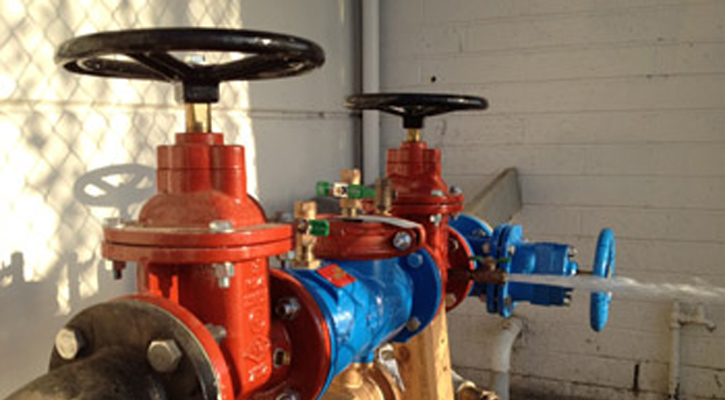Is It Required to Check for Backflow in My Water
Is It Required to Check for Backflow in My Water
Blog Article
This post down below relating to Backflow Assembly Testing is relatively fascinating. Don't miss out on it.

Yes, you need to backflow test your home's water supply to ensure that the water is devoid of contaminants as well as damaging levels of chemicals. Because of the tools needed and area for error, you should not try to carry out backflow screening on your own. We suggest that you call a professional plumber every couple of years to check your water.
Backflow Can Influence Both You and Your City
Since hazardous heartburn can influence the public water supply in enhancement to a single building, many cities establish heartburn standards. Luckily, contemporary cities have backflow devices in position that shield the water that originates from a lot of homes and commercial homes. The actual risk originates from watering systems, which can harm the water with hazardous fertilizers, manure, and various other chemicals.
What Creates Backflow?
A typical cause of heartburn is a loss of water stress that triggers the water to siphon back into the water supply. After some time, there is a loss in water pressure and the tube starts to suck the water back into the water supply. As you can picture, there are currently chemicals from the paint that are getting in the water supply, potentially posing a hazard.
Heartburn Testing is Called For by Legislation in Certain Cities
Depending on where you live, you could actually be required by legislation to backflow examination your law. Iowa City maintains a record of all residential or commercial properties offered by the city's water supply.
You Can Avoid Backflow
Dangerous heartburn is quickly avoidable if you have a professional plumber install a backflow device. The plumber will certainly additionally examine for heartburn and determine if there is an active risk. The primary purpose of a backflow tool is to avoid water from streaming backward right into your water system. Plumbing professionals set up the device on the pipelines in your home to ensure that the water just flows in the correct instructions.
What is Heartburn?
In short, backflow is when water moves upwards-- the opposite direction in the plumbing system. This is likewise referred to as "backpressure." When the water relocates this instructions, it can combine with dangerous contaminants and also posture a threat.
Call a Plumber to Test for Backflow Before It is Far too late
A plumbing company can rapidly check your residence's water to determine if there are any type of hazardous chemical degrees. And also if you do uncover that your water has high levels of toxins, a plumber can easily install a backflow prevention device.
Yes, you need to backflow test your home's water supply to ensure that the water is totally free of toxic substances and dangerous degrees of chemicals. Lots of cities develop backflow guidelines because dangerous heartburn can influence the public water supply in enhancement to a single building. A typical reason of heartburn is a loss of water pressure that triggers the water to siphon back right into the water supply. After some time, there is a loss in water stress and also the hose pipe begins to suck the water back into the water supply. The main objective of a backflow tool is to prevent water from flowing backwards right into your water supply.
WHY DOES BACKFLOW TESTING NEED TO BE DONE EVERY YEAR
What Is Backflow?
Toxic gas backing up into a building is one example of potential backflow issues, but backflow can occur in many other ways.
Backflow is generally referred to as the reversal of a liquid or gas in a plumbing system.
Most issues for the public occur with backflow resulting in contaminated drinking water. If you look up backflow issues online you’ll probably find references to “potable” water. That means drinking water.
There have been backflow issues in the past with drinking water. Chemicals, sewage and other contaminants have found their way into drinking water causing health issues for those that count on the fresh water.
What Causes Backflow?
In a residence or commercial building water generally flows one way. This normal flow is usually driven by consistent pressure in the water and waste system.
Anything that changes the normal pressure in the system can lead to backflow.
Fire hydrant use or malfunction can reverse the normal pressure in the system on a city line, but backflow can occur in a number of different ways.
Sometimes backpressure might be caused by someone using a garden hose and submerging the end of the hose in a pool of liquid. If pressure is lost the flow could reverse and contaminants could be released into the drinking water.
Anytime there is a connection between contaminants and the drinking water there is potential for a backflow issue. Sometimes these connections are not immediately obvious like the garden hose connecting to a building’s drinking water supply.
Backflow Regulations
The Environmental Protection Agency (EPA) provides guidelines and regulations for state and local governments regarding backflow. State and local governments also have their own guidelines and regulations for backflow prevention.
Arizona has its own backflow regulations.
Due to issues with backflow in the past, regulations require backflow preventer devices to be used in nearly all residential and commercial buildings.
A backflow preventer is a device that prevents backflow as cross-connection points where potential backflow issues may occur.
While backflow is not a common occurrence, preventers are in place to make sure there is no contamination should something malfunction or go wrong with a building’s water supply.

We hope you enjoyed our excerpt about Is backflow testing necessary?. Thanks a ton for taking time to read through our post. Are you aware of somebody who is looking into the topic? Do not hesitate to share it. I appreciate reading our article about Backflow Prevention.
Tap leaking? Call us. Report this page